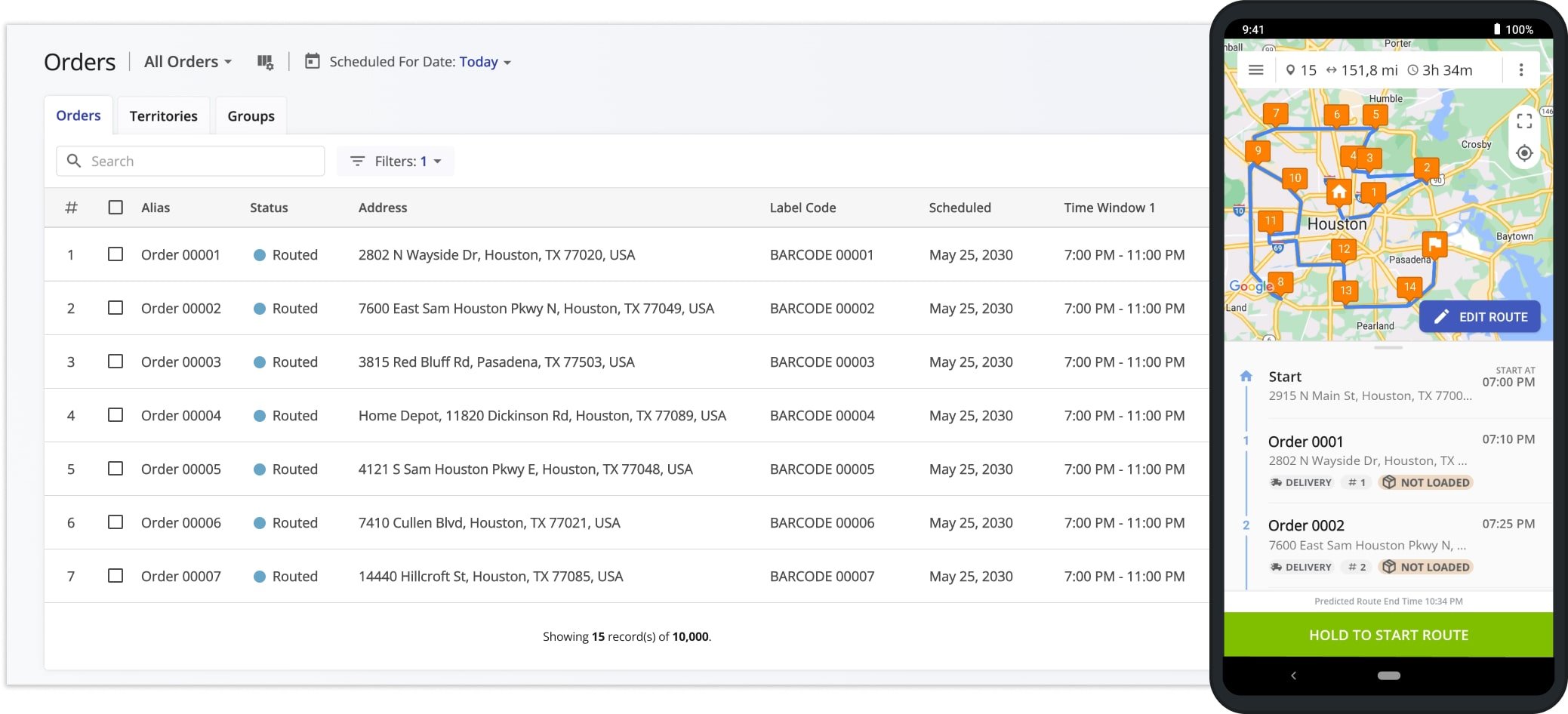Orders List Routing – Plan And Optimize Routes With Orders
The Route4Me ERP Order Management and Routing System enables medium and large last mile businesses to easily import, store, manage, and optimize routes with millions of customer orders. You can use Route4Me’s best delivery routing software to plan routes with Order Territories, route Order Groups, scan barcodes to plan routes, and plan routes directly from the Orders List. In this guide, you can learn how to use your Orders List to filter orders, plan and optimize routes with orders, dispatch order routes to drivers, and track route progress with order statuses in real-time.
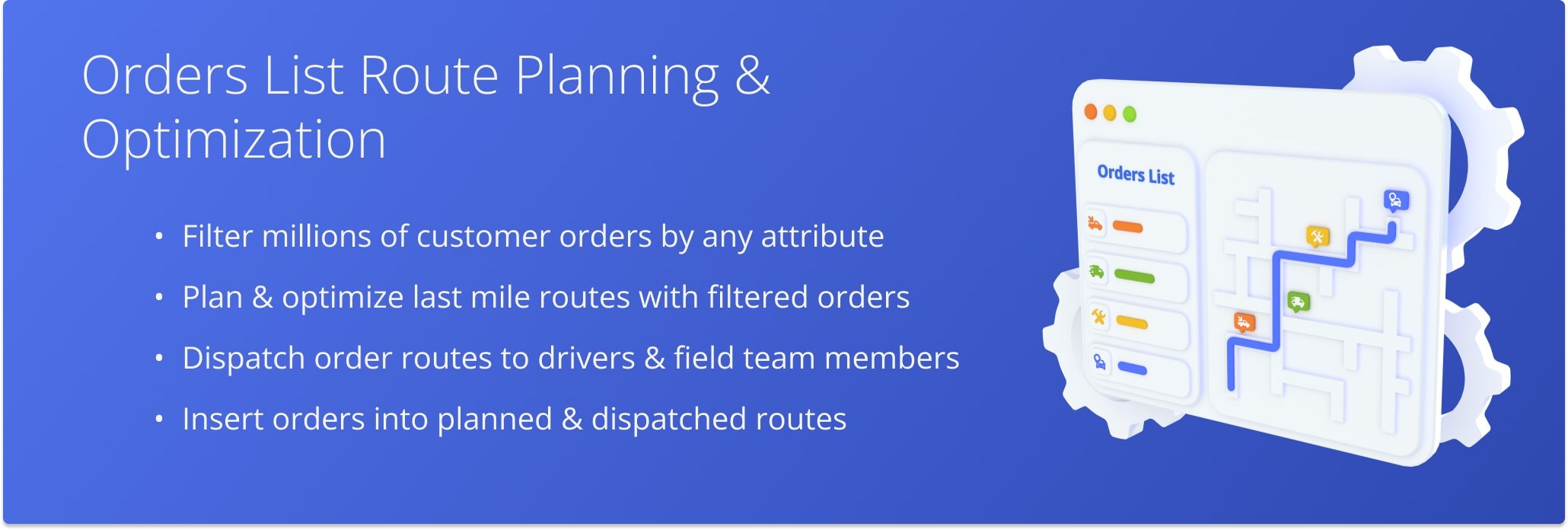
NOTE: Depending on your account configurations, you may have different features enabled. To enable or disable specific features, contact your Routing Expert or Route4Me’s Support Team.
Table of Contents
Filter Orders List To View Orders Ready For Route Planning
Before planning routes with orders in the Orders List, you can use customizable order filters to make sure only those orders that are ready for route planning and optimization are shown on the Orders List. To do so, go to “Operations” and then “Orders” from the Navigation Menu and select the “Plan Routes” View Mode. This View Mode shows only orders with the “Scheduled” and “Sorted” statuses, which are the only orders that can be used for planning routes. Additionally, learn more about Order Statuses.
Click to Open Your Route4Me Orders List
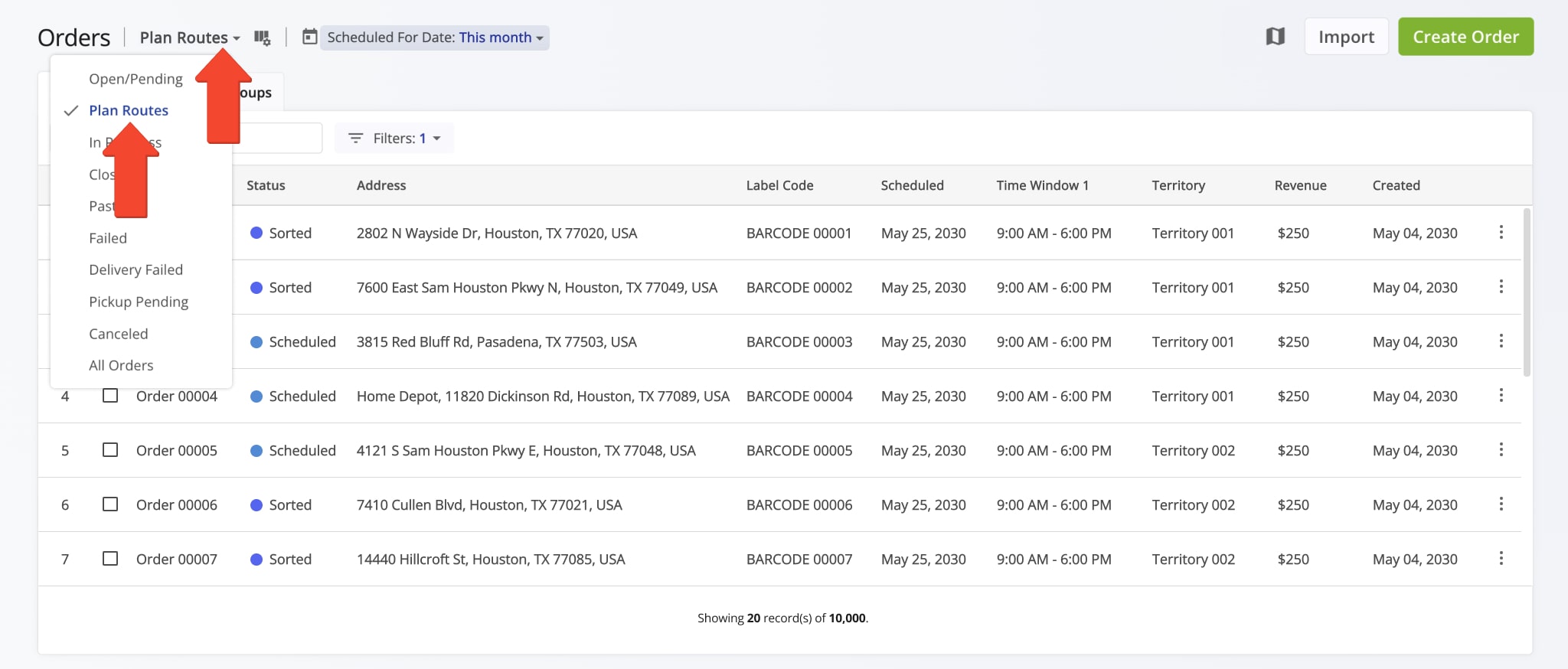
Next, filter orders by their scheduled date and any other preferred custom filters. To filter orders scheduled for a specific date, select the preferred date or date range in the “Scheduled For Date” field. Then, click “Filters” and filter orders by the preferred attributes. Additionally, learn more about Route4Me ERP Order System Filters.
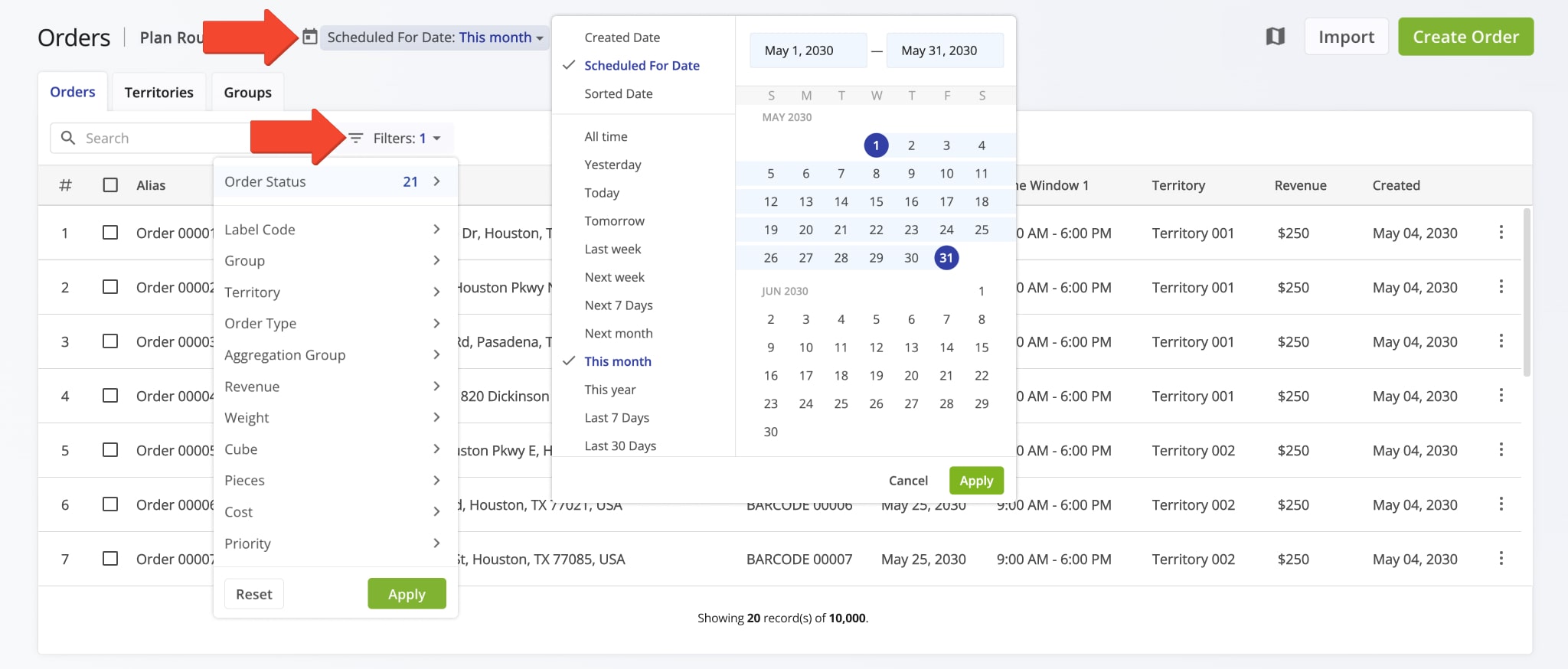
Select Orders To Plan And Optimize Customer Order Routes
After filtering orders, select the orders you want to use for route planning by checking the boxes next to them. To select all filtered orders, check the box at the top of the list. Depending on the applied filters, you may have hundreds or thousands of filtered orders. After that, click the “Plan New Route(s)” button.
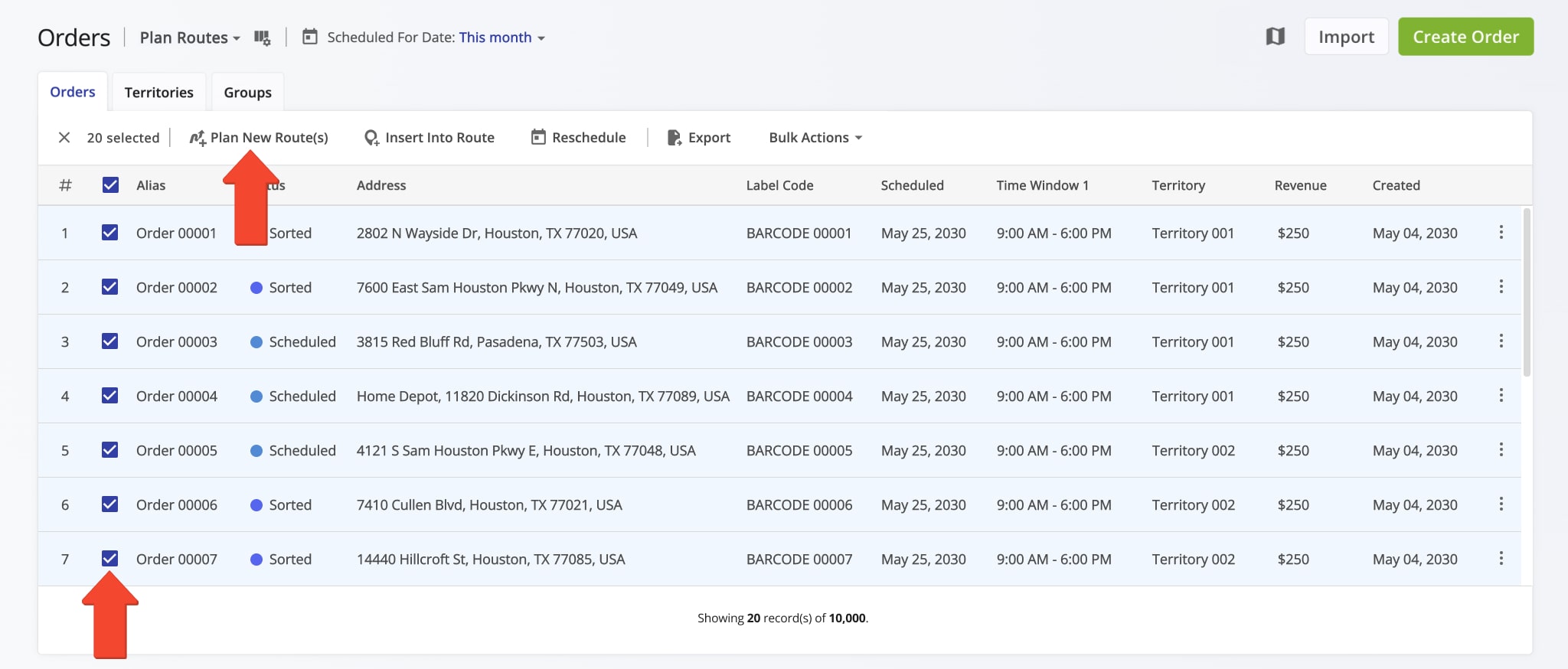
Next, select the preferred Optimization Profile to use for optimizing routes with the selected orders. Additionally, learn how to create, manage, and use Route4Me’s Route Optimization Profiles. Alternatively, you can manually specify the preferred route optimization settings. To do so, click the “Skip” button.
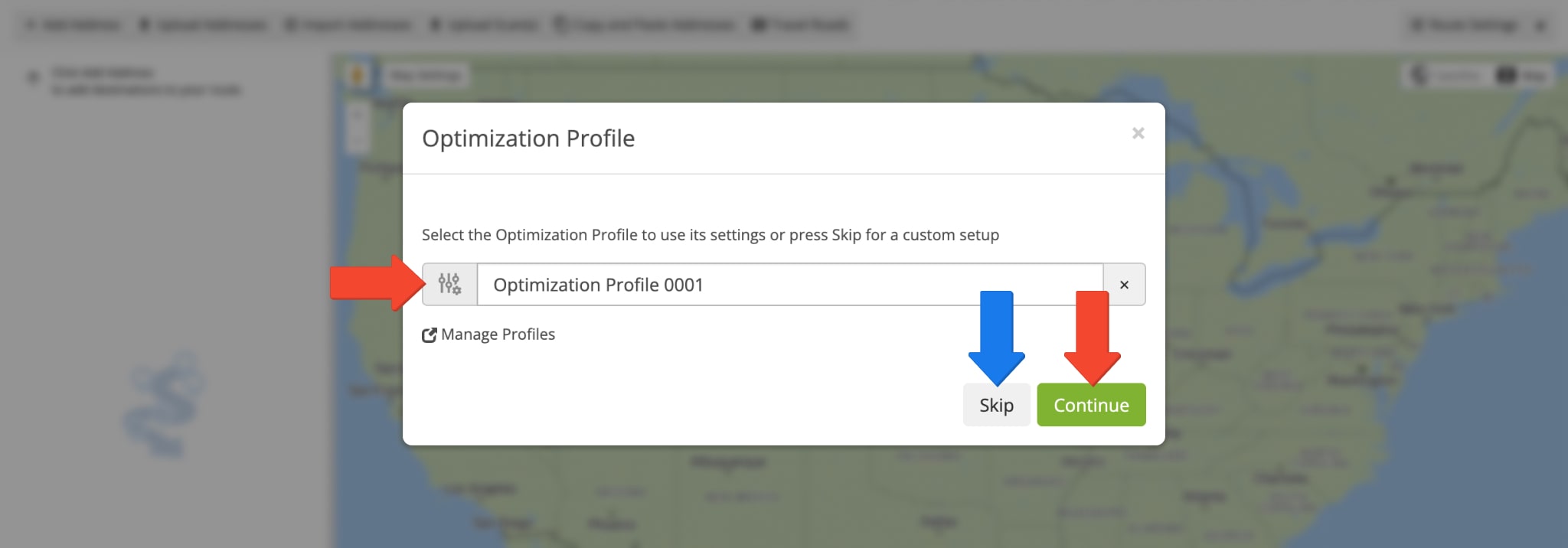
To manually specify the preferred route settings and optimization constraints, go to the “Optimization” tab. Then, select Multiple Drivers route optimization to plan the most optimal number of routes with the selected orders. Next, you can specify various optimization constraints and business rules. For example, the maximum number of routes, Maximum Route Duration, Maximum Pieces, Weight, Volume, Revenue per Route, etc. Additionally, learn more about Route4Me’s Route Optimization Constraints.
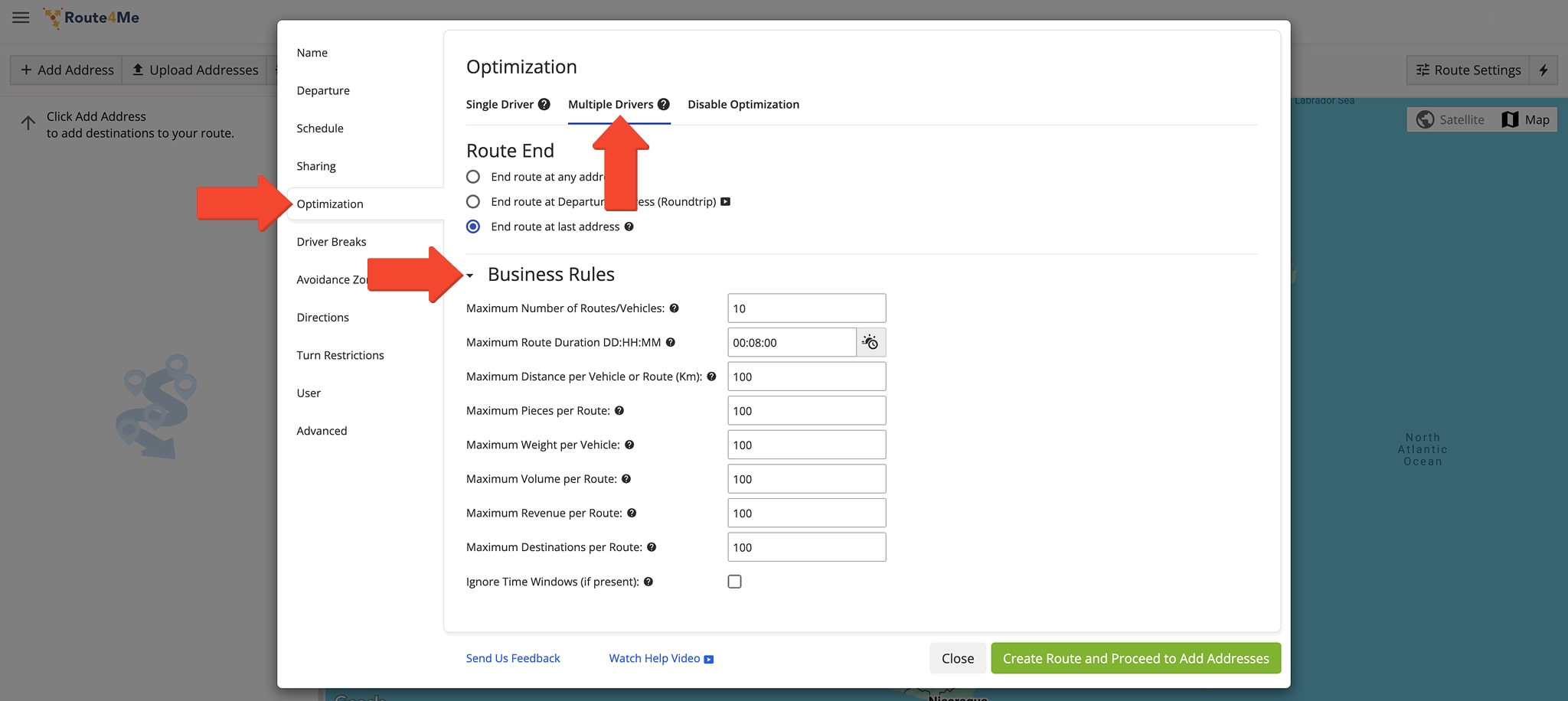
Depending on the number of selected orders and optimization settings, the reliable route optimizer plans the most optimal number of routes. When the system optimizes a single route, it automatically opens that route in the Route Editor. When the system optimizes multiple routes, they are opened on the Routes Map, where you can simultaneously view and manage multiple routes.
Accordingly, each order becomes a destination on the respective planned route. Specifically, the order’s address is used as the destination address, and associated order details, such as customer information, barcode, etc., are associated with the destination.
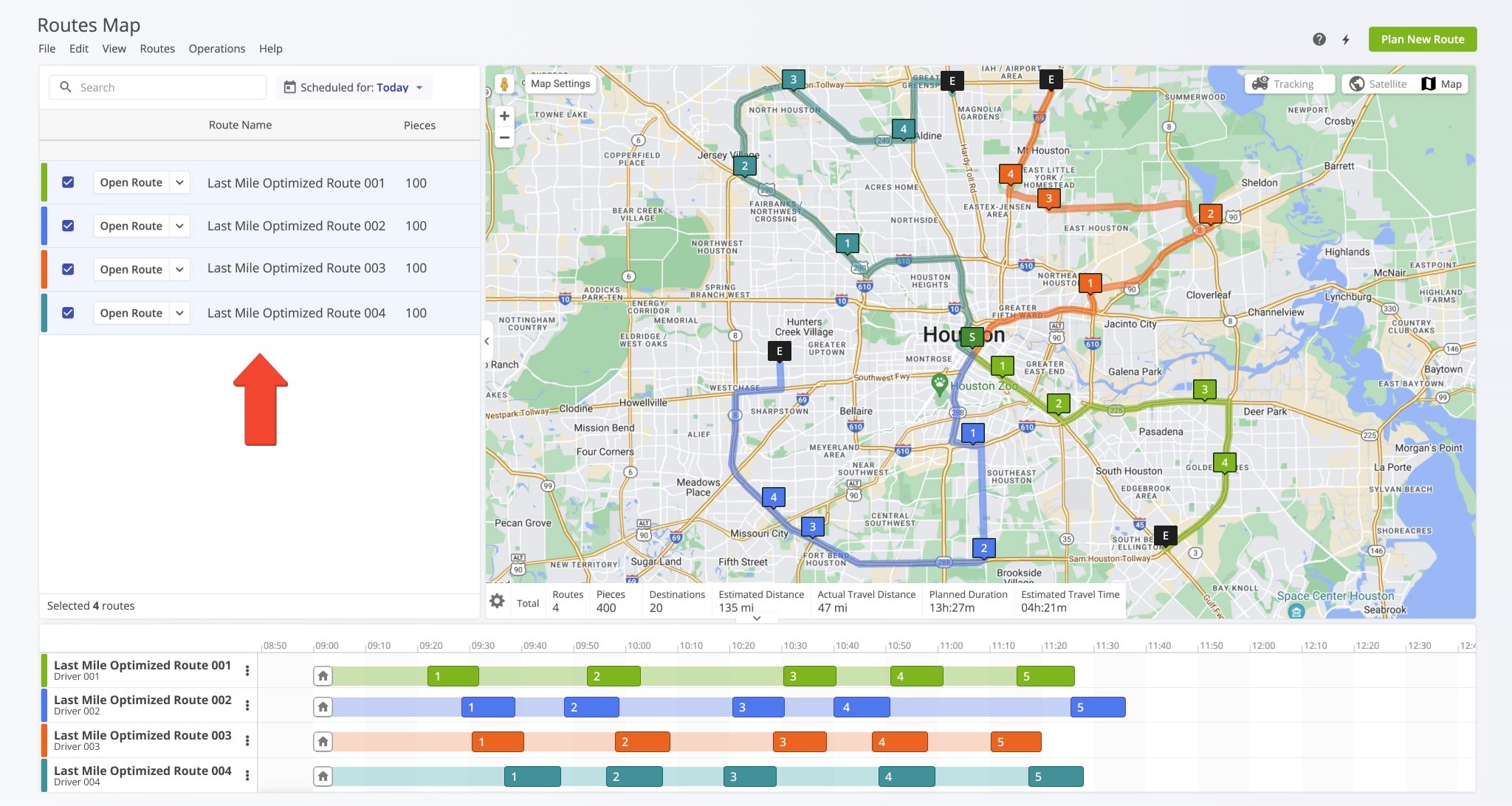
Insert Sorted And Scheduled Orders Into Planned Routes
Alternatively, you can select orders and insert them into planned and optimized order routes. To do so, select the preferred orders by checking the boxes next to them. Then, click the “Insert Into Route” button from the action bar above the Orders List.
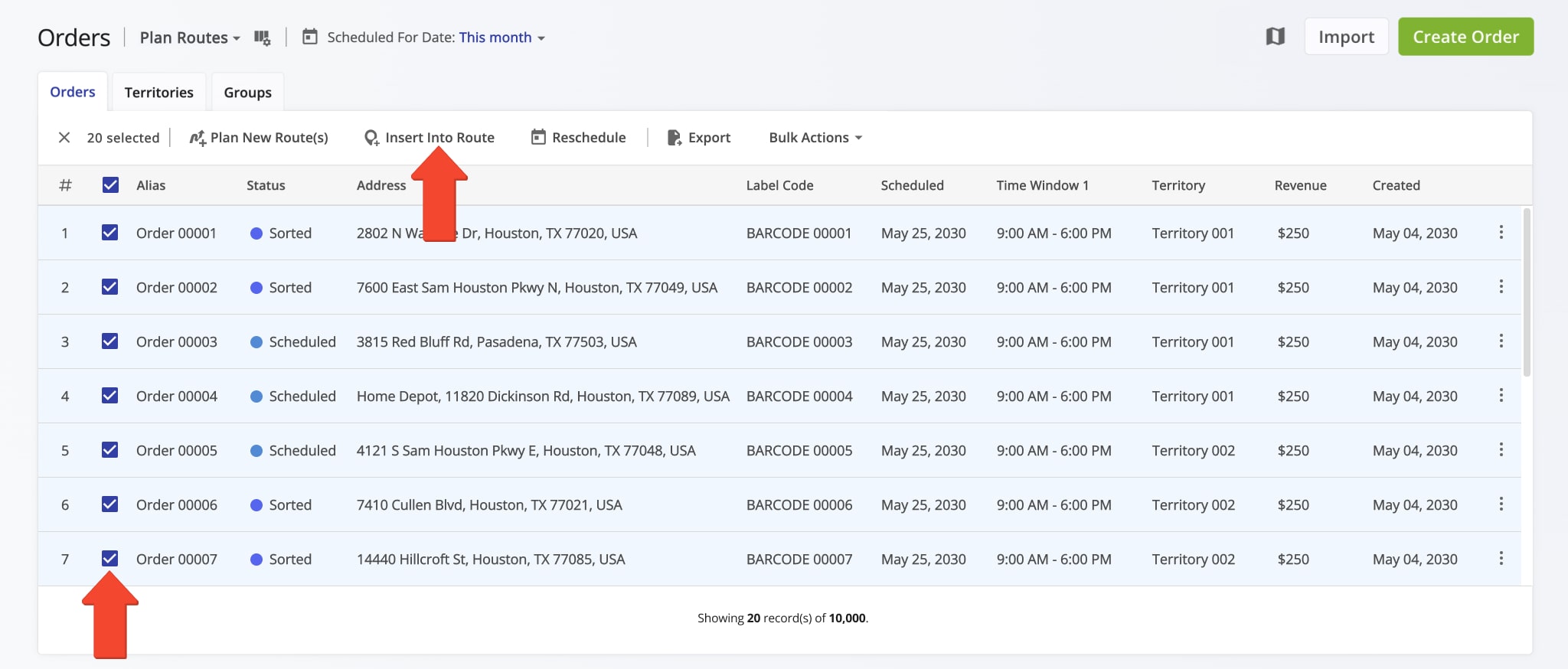
This will open the “Insert Into Route” window where you can search for the route into which you want to insert orders by name or alias. Once you find the preferred route, click the “Insert” button and Route4Me will automatically add route destinations corresponding to the associated addresses of the inserted orders.
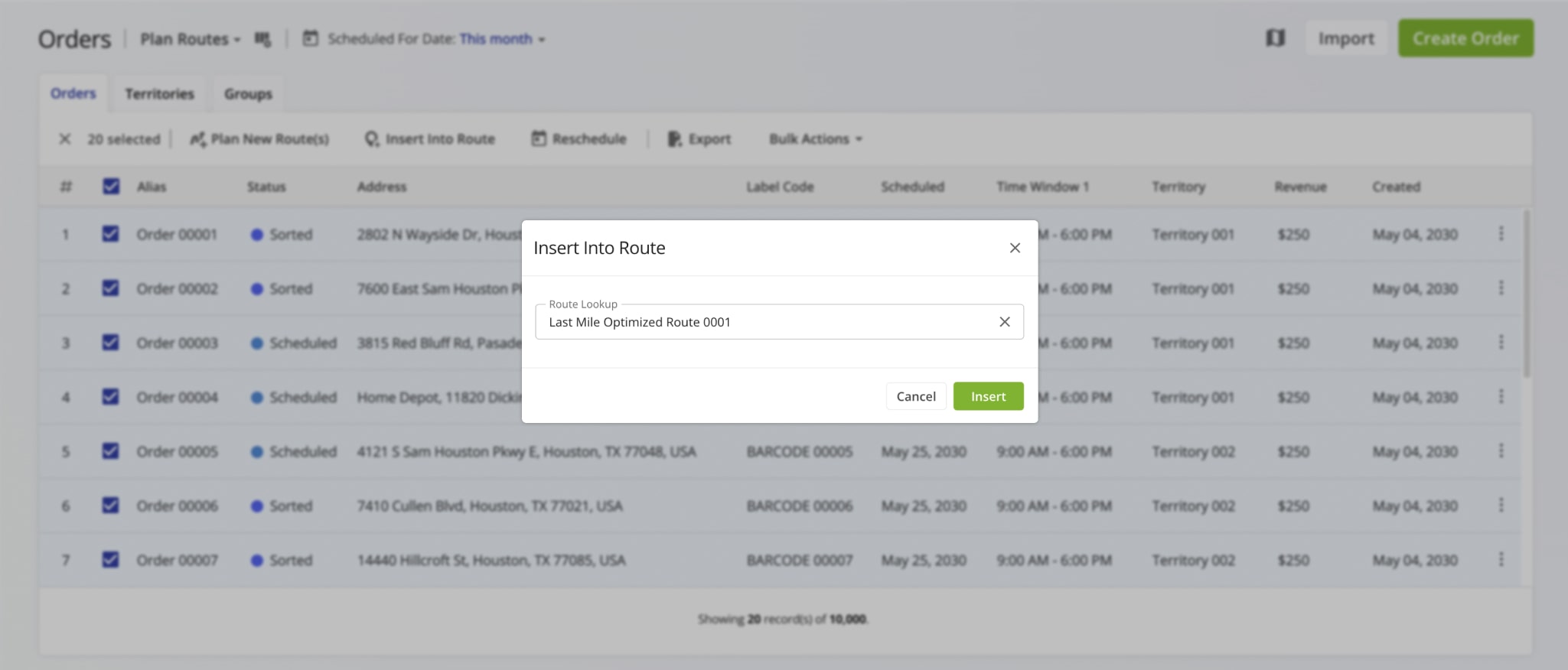
The status of inserted orders will change to “Routed“, reflecting that the orders are included in a planned and optimized route. Furthermore, the newly added route destinations will include all order details and customer information from the imported orders. Specifically, order attributes such as pieces, barcodes, etc., become destination info when orders are routed.
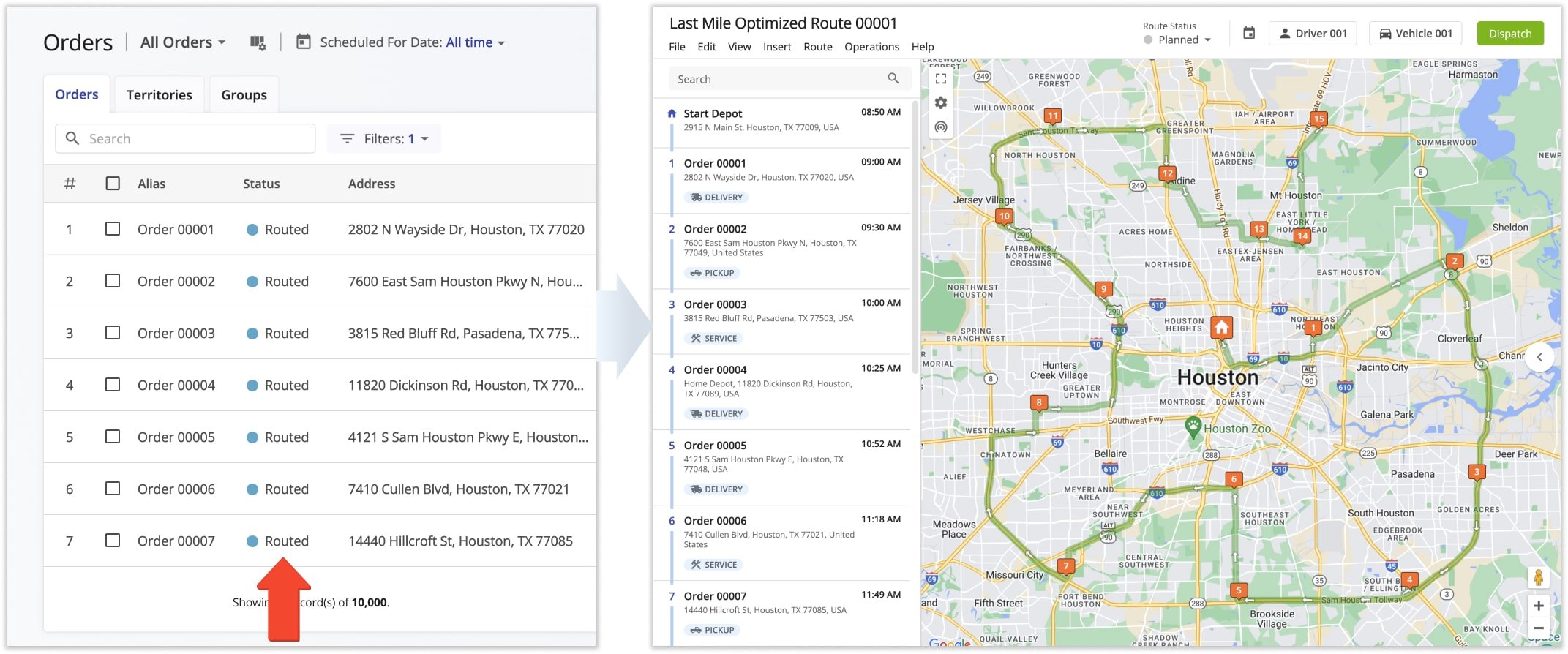
Orders Map Routing – Plan Order Routes On Interactive Orders Map
The interactive Orders Map enables you to seamlessly plan order routes on the map. To do so, click the Draw Polygon or Draw Rectangle button in the top right of the Orders Map. Alternatively, right-click anywhere on the map and select the preferred shape drawing option. Then, draw a shape around the orders you want to include in a route. Next, right-click the shape and select “Plan Route” from the menu. Route4Me’s Web Software will automatically open the Route Planning screen and import the selected orders into the newly planned route.
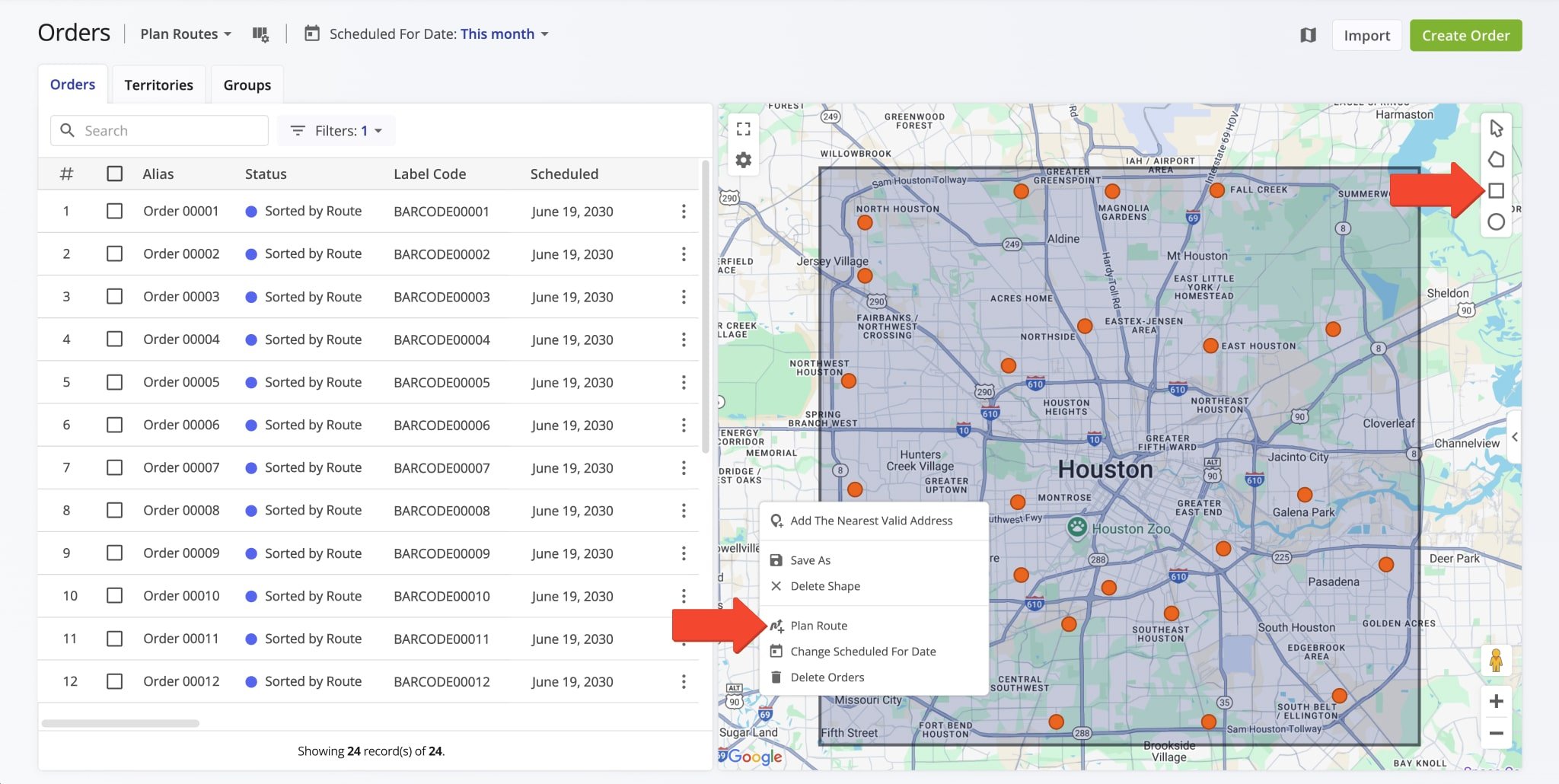
Plan Routes With Territories On The Orders Map
You can create and route Order Territories on the Orders Map. To plan an Order Territory route on the Orders Map, click the Three-dot Icon next to a Territory and select “Plan Route” from the menu. Route4Me’s Enterprise Order Routing Software will automatically open the Route Planning page and import the selected orders into the newly planned route. After you’ve planned a new route, it will automatically open in the Route Editor.
Additionally, you can plan multiple separate territory routes or plan a combined route from multiple territories when planning routes on the Orders Map.
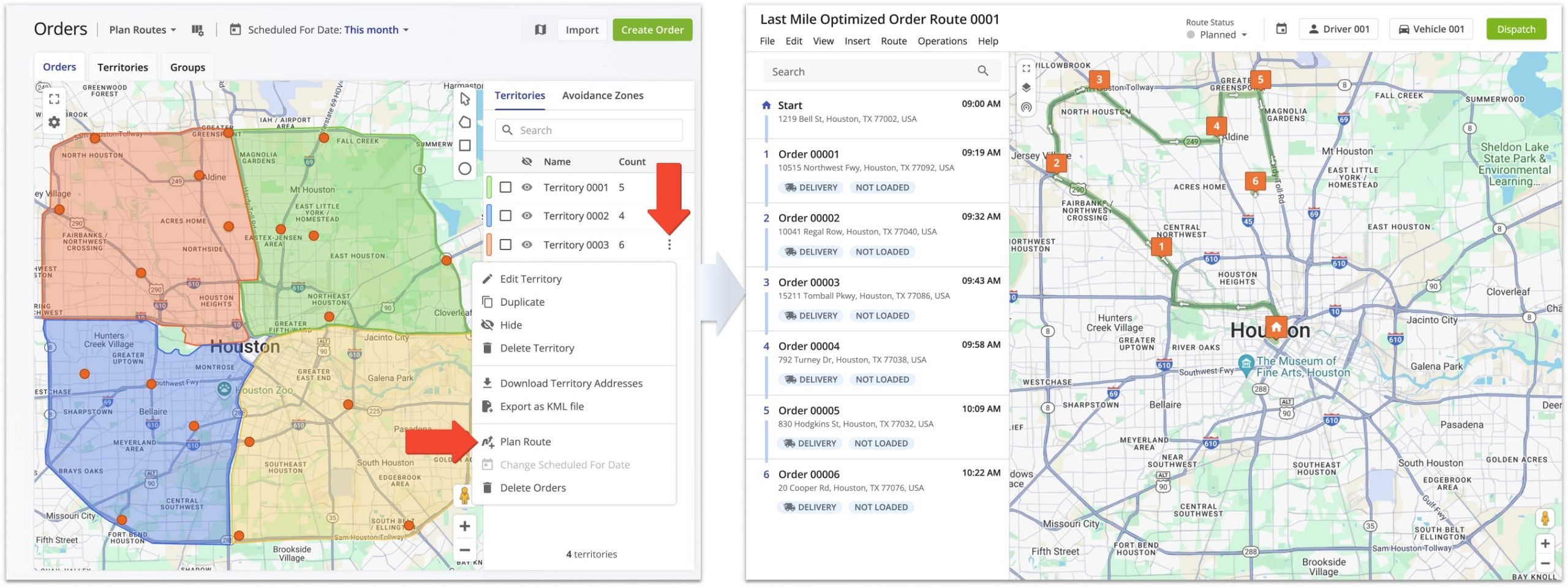
Dispatch Order Routes To Route4Me Mobile App For Drivers
Furthermore, you can dispatch optimized routes to drivers and vehicles. When using Optimization Profiles, routes are automatically dispatched to the driver and vehicle specified in the used profile. To manually dispatch a route to a driver, assign the preferred user to the given route. Similarly, to manually dispatch a route to a vehicle, assign the preferred vehicle to the route.
Accordingly, when a user is assigned to the route, this user can open and complete this route using Route4Me’s Mobile Driver App. As drivers complete their routes, the orders on those routes will change their status accordingly in real-time. For example, when orders are loaded on the route, the route is started, when orders are unloaded, etc.
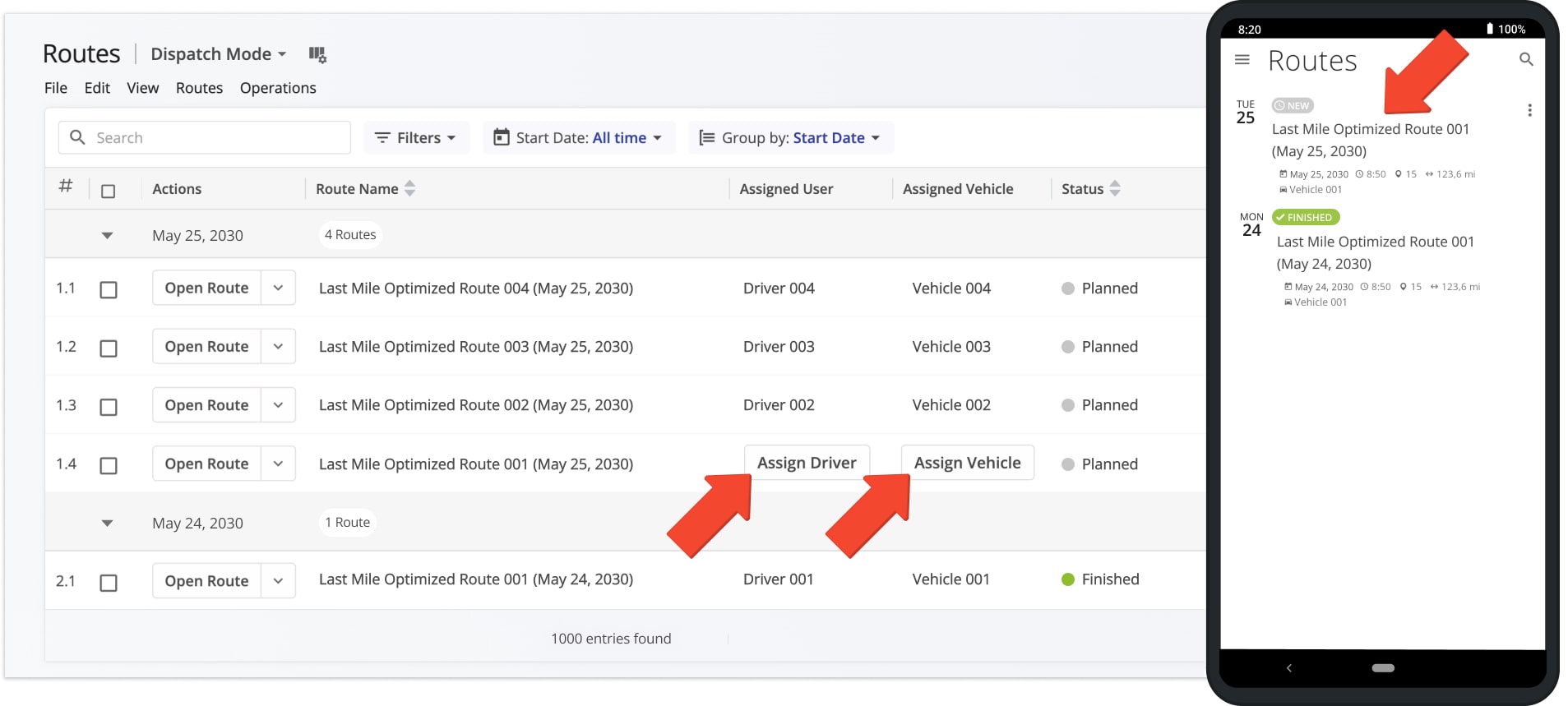
Track Customer Order Route Progress And Order Statuses
To track the status of the orders included in planned routes, follow the steps outlined below.
- Select the “In Progress” View Mode in your Orders List.
- Next, select the preferred date or date range in the “Scheduled For Date” field.
After that, the reliable delivery routing software will show the number of routed orders for each date within the selected date range. Specifically, each line represents a date, and the “Routed” column shows how many orders scheduled for this date are included in planned routes. - Then, click the Arrow Icon next to the preferred date to open the routed orders scheduled for that date.
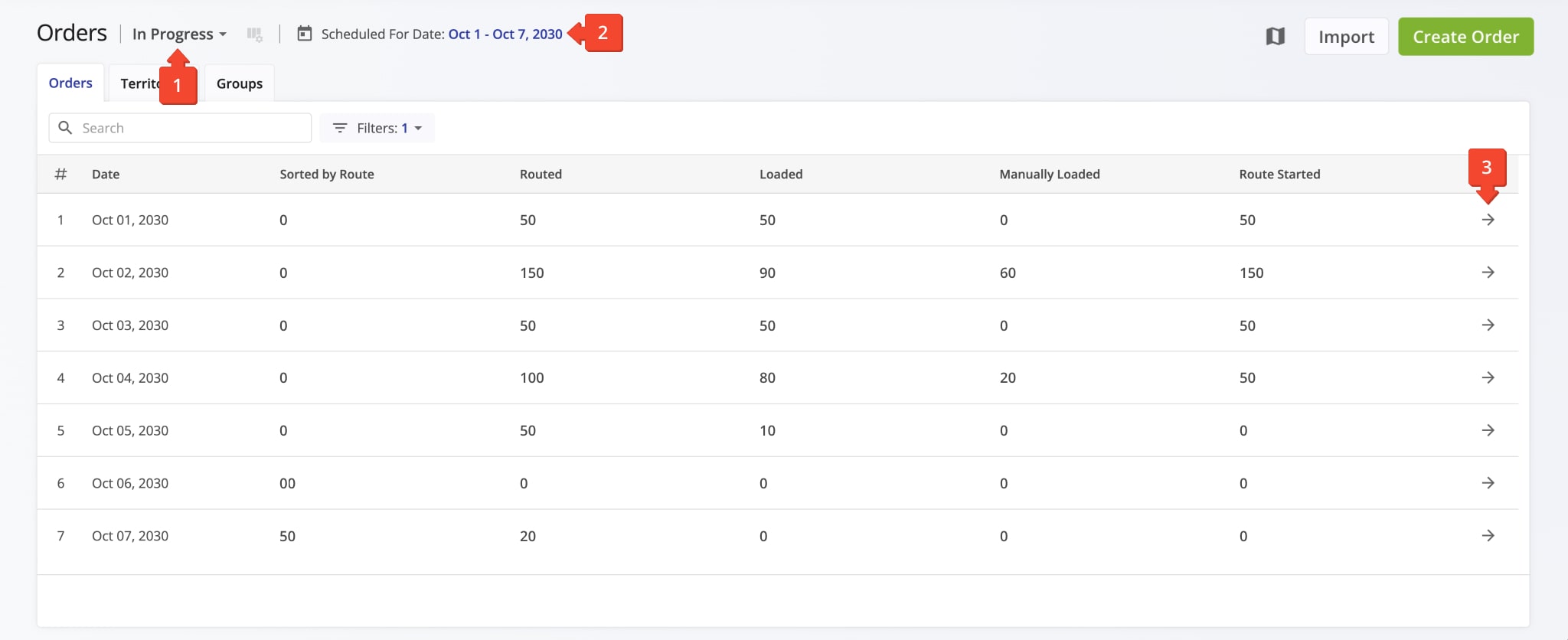
Next, make sure that the orders are filtered by the “In Progress” View Mode and the respective date. In the “In Progress” View Mode, you can view orders with the following statuses: Loaded, Manually Loaded, Routed, and Sorted. Additionally, you can learn more about Route4Me’s ERP System Order Statuses.
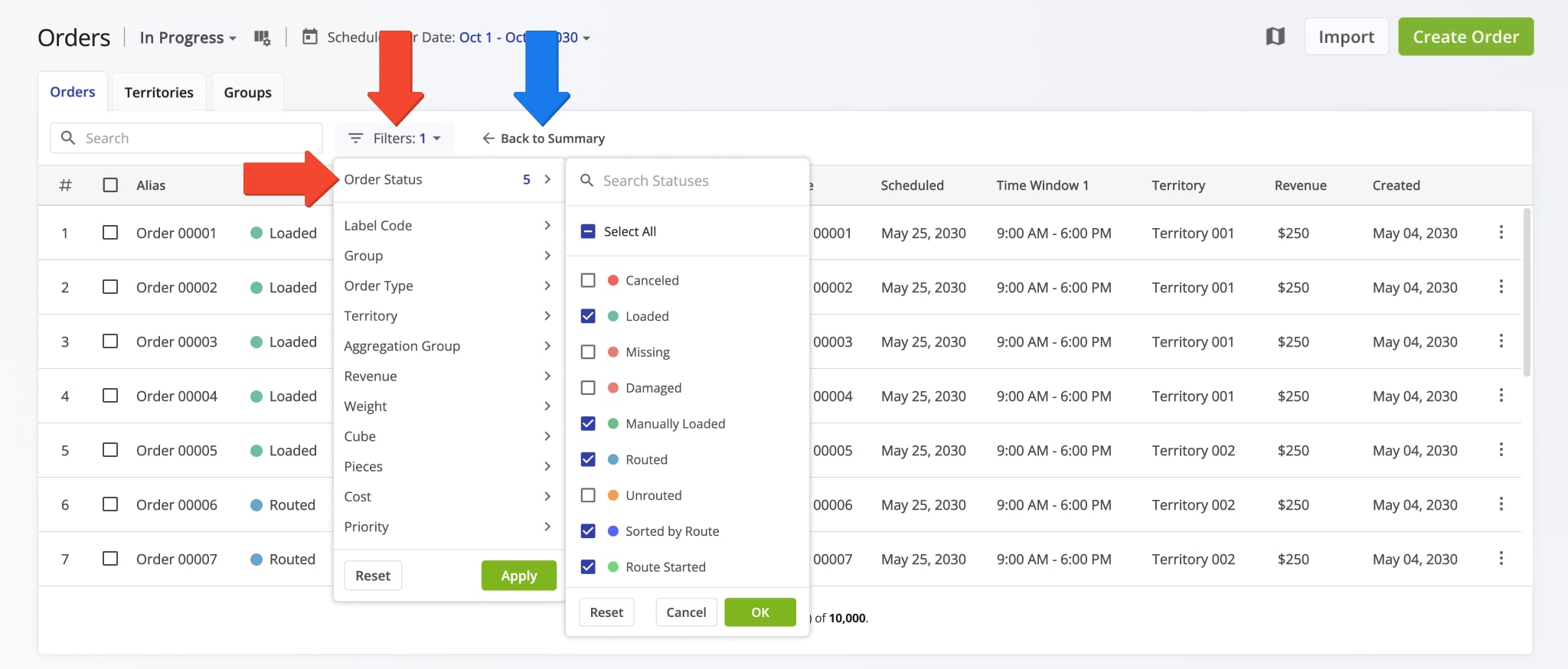
Accordingly, as orders are loaded on routes, delivered, and completed, they change their status in real-time. Specifically, once an order is included in a route, the route is dispatched to the driver. Next, the driver can use Route4Me’s Android Order Routing App or iPhone Route Planning App to load the order on the route, deliver, and unload the order.
As the driver updates the order’s status using the mobile app, the route progress and the order status is automatically updated in your Orders List in real-time. When the order is successfully completed, it is assigned the “Closed” status. Additionally, learn more about Route4Me’s ERP Order System Statuses and Order Lifecycle.
Visit Route4Me's Marketplace to Check out Associated Modules:
- Operations
Advanced Team Management Add-On
- Operations
Custom Data Add-On
Last Updated:
